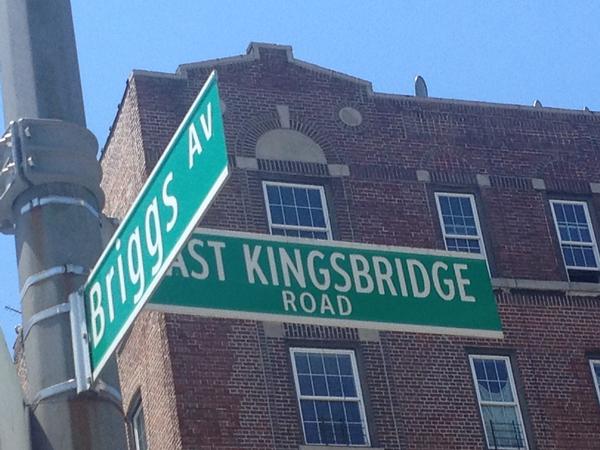
Photo by: Jordan Moss
A sign of things to come at one Bronx corner. Federal regulations now call for mixed-case lettering of street signs because they are easier to read than all caps. For readers having difficulty making it out the sign in capital letters, it reads “East Kingsbridge Road.”
Street signs across the five boroughs lack uniformity as the city works to meet new federal standards that were supposed to be implemented by 2018, before the Obama administration eliminated the deadline after complaints from municipalities about the cost.
This has created a clash of cases at places like the intersection of Briggs Avenue and EAST KINGSBRIDGE ROAD, or the juncture of BAILEY AVE. and Albany crescent.
However, Bronx residents don’t seem to be phased by the inconsistencies.
“I don’t think it’s that big of a deal,” said Mt. Eden resident Julio Gonzalez, 40. “We’ve got bigger problems than that in the city.”
The new federal mandate calls for mixed-case lettering (first letter uppercase and the rest lowercase) and prismatic reflective sheeting. The feds made changes to their typography requirements, which were outlined in the 2009 edition of the Federal Highway Administration’s Manual on Uniform Traffic Control Devices, because studies show that lowercase lettering is easier to read. The sheeting makes them easier to see at night.
The feds initially set a 2018 deadline for cities to complete the project, which The Daily News reported involved changing all 250,000 of New York’s signs, costing the city $27.5 million. Many New Yorkers objected to the changes, as did cities across the country, which led the Obama administration to eliminate the deadline in May 2012.
“Some of these burdensome deadlines would have cost communities millions of dollars at a time when they can’t afford that,” said U.S. Transportation Secretary Ray LaHood, in a May 2012 statement on why the Obama administration removed the 2018 deadline. “We spoke to state and local officials across the country, and we heard them loud and clear.”
The city’s Department of Transportation will now only change street signs when routine sign maintenance is needed. And if construction requires the removal of street signs, contractors will re-install signs that meet the standards, according to a DOT spokesperson.
Elected officials were essentially in the dark about what caused the signs around them to still be in two different typefaces, but they had clear opinions when told about the project’s current status.
“I like the new signs better, but the city shouldn’t bear the cost of them if it’s a federal mandate,” said Assemblyman Jeffrey Dinowitz (Riverdale, Kingsbridge, Norwood and Wakefield). “When you have a limited amount of money, you really have to prioritize how you spend it.”
Council Member James Vacca (Pelham Parkway North and South, Pelham Bay, Country Club, City Island, Throggs Neck, Allerton and Morris Park), who chairs the Transportation Committee, said he doesn’t have a preference for either the new or the old street signs, but he stressed the importance of maintaining them.
“Street signs are a necessity in our city,” he said. “There must be visible signs that are replaced expeditiously when they are missing.”
Though the sign changes appeared to occur more quickly initially, another spokesperson added: “DOT has not replaced signs at a faster pace and did not use additional resources on this design change.” He reported that only 13,000 signs have been updated to date.
For now, Bronx residents seem to be navigating the confusion. Said Stephany Castillo, 17, as she walked by the Mt. Eden 4-train station, “We all know what it says, at the end of the day,”








